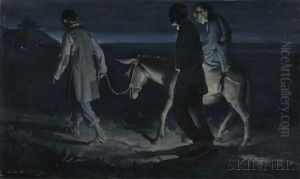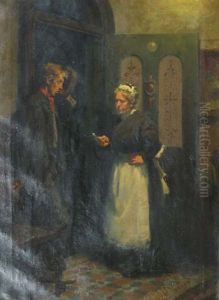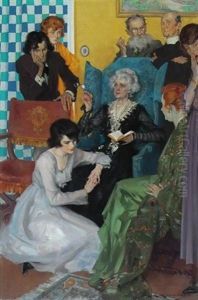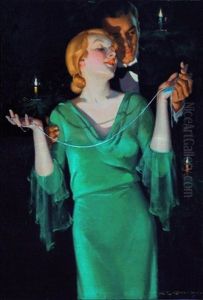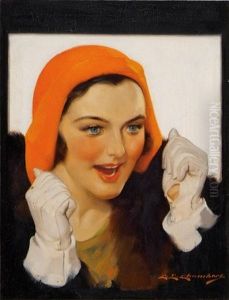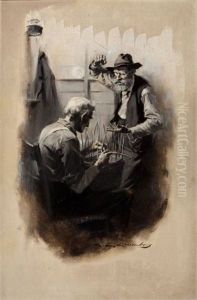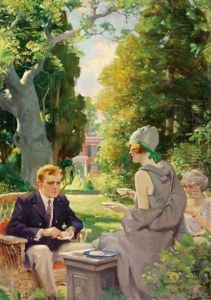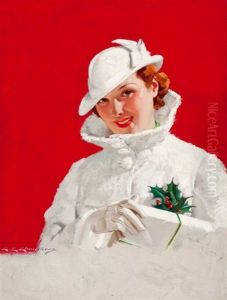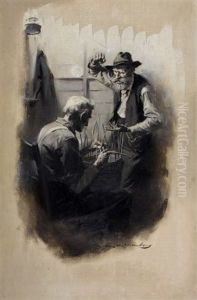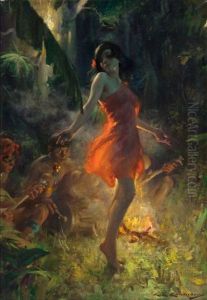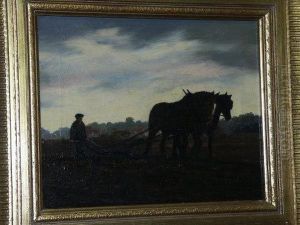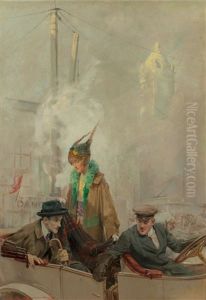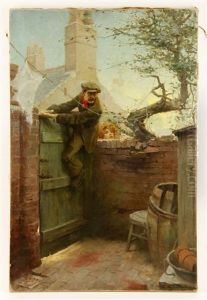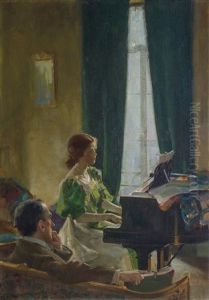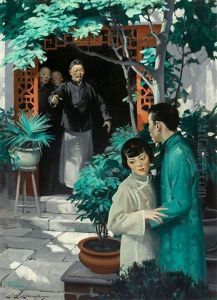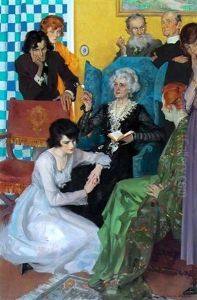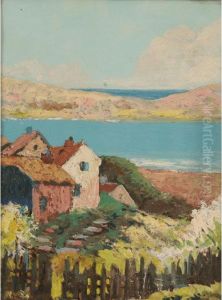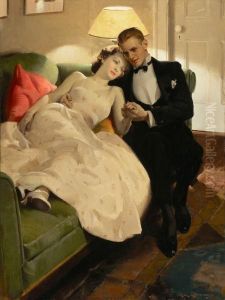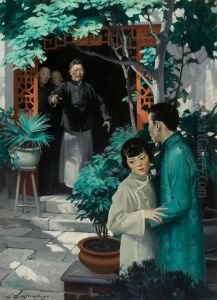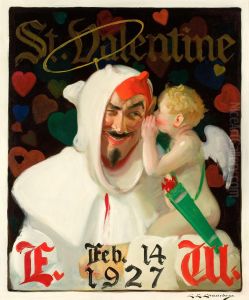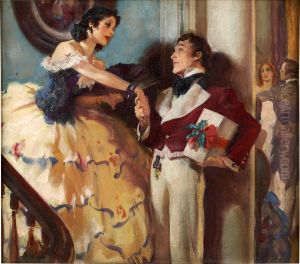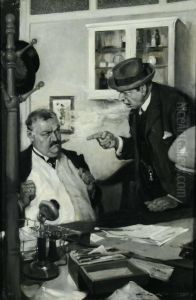Charles Edward Chambers Paintings
Charles Edward Chambers, born in 1883 in St. Louis, Missouri, was an illustrious American illustrator known for his work in magazines, advertising, and books during the early 20th century. His artistic journey began with a solid foundation in education, which included studying at the School of the Art Institute of Chicago and later, furthering his skills in Paris at the Académie Julian, a prestigious art school that attracted many American students. Chambers' European studies imbued him with a blend of classical art training and exposure to the modern movements of the time, which would profoundly influence his distinctive style.
Upon returning to the United States, Chambers quickly established himself as a sought-after illustrator. His work was characterized by a refined elegance and often depicted romantic, idealized scenes that appealed to the sensibilities of the era. He became a regular contributor to leading magazines such as The Saturday Evening Post and Ladies' Home Journal, where his illustrations reached a wide audience, cementing his reputation. Chambers also found success in advertising, applying his talents to create compelling imagery for various companies, thereby showcasing his versatility as an artist.
In the realm of book illustration, Chambers made significant contributions as well, lending his artistic prowess to the visual interpretation of stories and novels. His ability to capture the essence of a narrative in a single image or a series of illustrations was remarkable and added a new dimension to the literary works he embellished. Throughout his career, Chambers evolved his technique and style, adapting to changing tastes while maintaining the high quality and distinctiveness of his art.
Charles Edward Chambers' impact on American illustration was profound. His work not only reflected the aesthetic and cultural trends of his time but also influenced future generations of artists. Despite his death in 1941, Chambers' legacy lives on through his enduring contributions to the field of illustration, where his art continues to be celebrated for its beauty, emotion, and mastery of form. His life and work remain a testament to the rich tradition of American illustration in the early 20th century.
